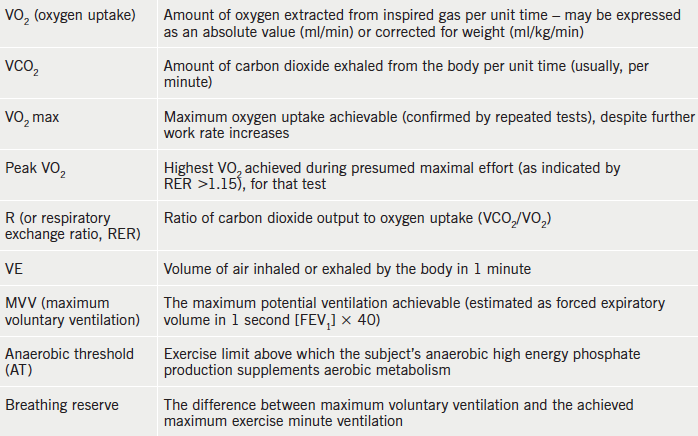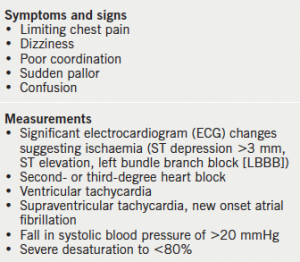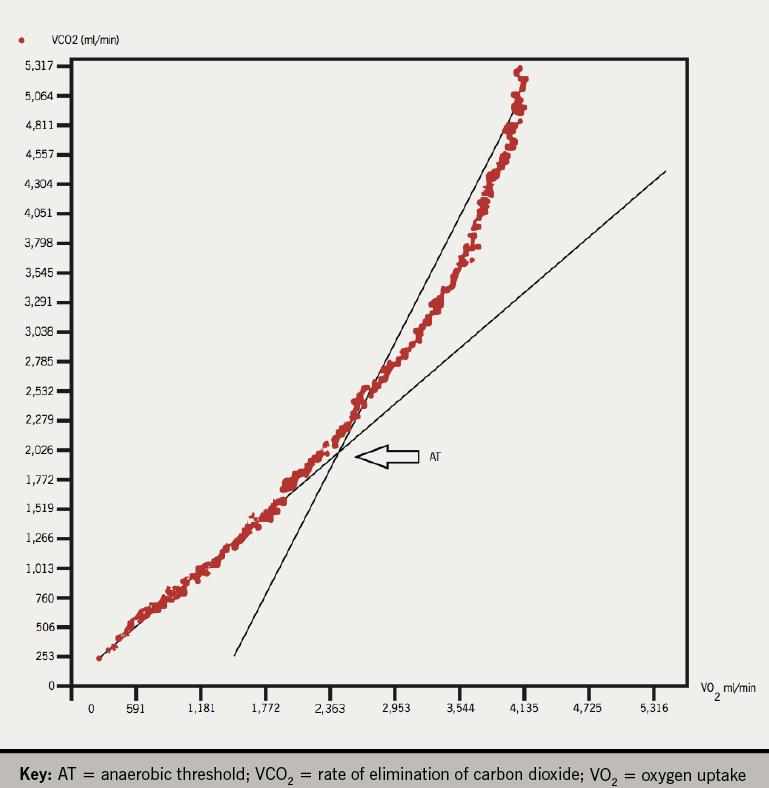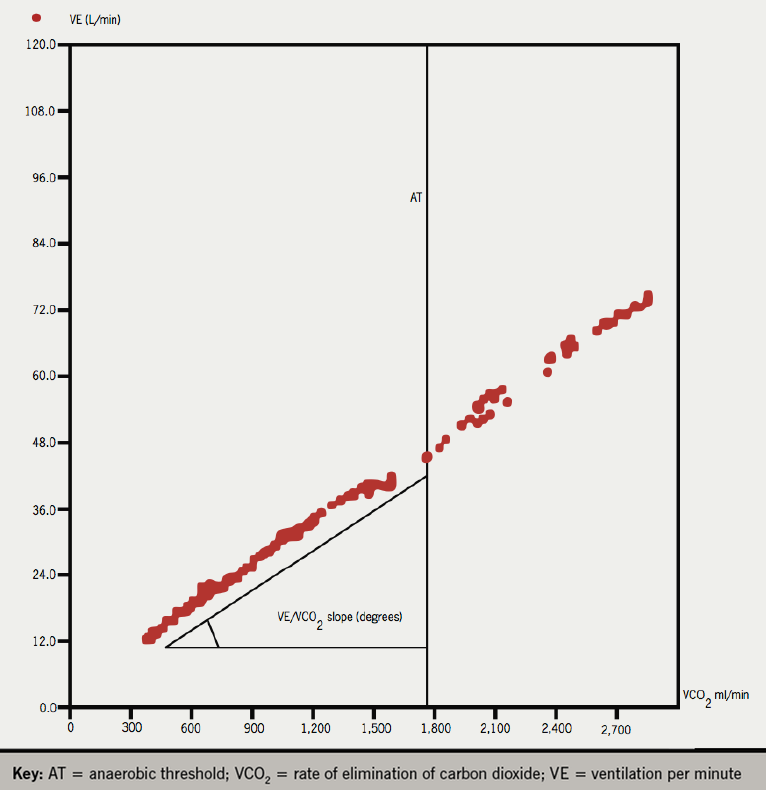Cardiopulmonary exercise testing (CPEX) is a valuable clinical tool that has proven indications within the fields of cardiovascular, respiratory and pre-operative medical care. Validated uses include investigation of the underlying mechanism in patients with breathlessness, monitoring functional status in patients with known cardiovascular disease and pre-operative functional state assessment. An understanding of the underlying physiology of exercise, and the perturbations associated with pathological states, is essential for healthcare professionals to provide optimal patient care. Healthcare professionals may find performing CPEX to be daunting, yet this is often due to a lack of local expertise and guidance with testing. We outline the indications for CPEX within the clinical setting, present a typical protocol that is easy to implement, explain the key underlying physiological changes assessed by CPEX, and review the evidence behind its use in routine clinical practice. There is mounting evidence for the use of CPEX clinically, and an ever-growing utilisation of the test within research fields; a sound knowledge of CPEX is essential for healthcare professionals involved in routine patient care.
Introduction
Cardiopulmonary exercise (CPEX) testing is used to establish the degree of exercise limitation, to identify the underlying mechanisms responsible in patients with breathlessness, and to monitor functional status in cardiovascular disease.1 It is an important prognostic tool and decision-aid in the assessment of peri-operative risk.2 In addition to the routine parameters measured during the exercise electrocardiogram (ECG) stress test, CPEX can provide measurements of oxygen (O2) consumption, carbon dioxide (CO2) production, and lung ventilation to provide valuable information about respiratory, cardiovascular and muscle metabolic function, as well as the subject’s effort during the test. Despite its useful diagnostic and prognostic functions, and established role in several guidelines for management of cardiovascular diseases, CPEX has remained largely a research or sport sciences tool, and is grossly under-utilised in clinical practice. This is commonly due to a lack of local expertise or awareness about the utility of CPEX among physicians. We review the indications and contraindications for CPEX and describe a standard protocol for cardiopulmonary stress testing. Additionally, we propose a practical reporting and data interpretation guide for the junior cardiology/respiratory trainee.
Indications and contraindications of CPEX

The diagnostic and prognostic indications, along with the contraindications for CPEX testing are listed in table 1. The ATS/ACCP guidelines (2003) include these absolute contraindications to CPEX,3 however, recently the test has been performed safely in conditions like severe aortic stenosis.4 Indications to perform the test are also increasing, as in the diagnosis of heart failure with normal ejection fraction,5 and in exercise prescription for heart failure patients.6
Preparation for CPEX assessment
Patients are advised to avoid caffeine, nicotine and food for two hours prior to CPEX.7 Enquiry into the patient’s past medical history, medications, any limitations and any special requirements for participation in CPEX should be made. If the patient has a pacemaker, defibrillator or a cardiac resynchronisation device, guidance of the cardiac physiologist or rhythm management specialist should be sought. Additional assessments that should be completed in advance of CPEX include: clinical examination of the cardiovascular, respiratory and peripheral vascular systems; ECG; resting oxygen saturation; blood pressure (BP); spirometry, including vital capacity and forced expiratory volume in the first second (FEV1). Commonly used abbreviations in CPEX are given in table 2.8

Checklist before the test
- Clinical history
- Drug history
- Device history (pacemakers/defibrillators)
- Clinical examination
- ECG
- Blood pressure
- Oxygen saturation
- Recent haemoglobin.
Protocol
The patient is prepared by connecting them to an ECG monitor and facemask. The facemask is tested for any air-leak and connected to the gas analyser. An alternative to a facemask is a mouthpiece with a nose-clip. Saliva dribbling from the mouthpiece is, however, a problem, especially at peak exercise. A pulse oximeter and sphygmomanometer are attached. Oxygen saturation can be measured either through a finger or earlobe probe.3 New forehead sensors are another alternative.
Incremental exercise testing can either be performed on a treadmill or an electronically braked cycle. Treadmills are widely used in the USA and UK,9 and are a popular method allowing most patients to exercise to their maximal physical limit, achieving satisfactory end points. Cycle ergometers are advantageous for quantifying work-rate accurately and, additionally, enable clinicians to gain arterial blood gas (ABG) samples if necessary. People with musculoskeletal limitations or imbalance that might limit weight-bearing may prefer the cycle ergometer, however, hamstring fatigue could stop cycle exercise before true peak VO2 is reached.9 The peak VO2 achieved on a cycle is usually 10–20% lower than that on a treadmill.9 Figure 1 shows a patient performing CPEX on a cycle ergometer.

Current software calculates the maximum Watts achievable automatically, based on the patient’s sex, age, height and weight. Then a protocol is selected to reach the maximum exercise in 10 minutes, usually by dividing likely maximum Watts by 10. The patient should be encouraged to exercise to his/her maximum physical limit, so that O2 consumption at peak exercise can be measured.
Several protocols with different increments in workload exist; a typical example is presented in table 3. Following a two-minute warm-up period, the exercise starts with speed and gradient increased by 1 km/hour and 1%, respectively, every minute. Less fit patients can use a protocol with 0.5 km/hour speed increase every minute. The operator records the reason for stopping the test at the end.


Patients should be monitored closely for complications. Table 4 lists the indications for terminating the test early.3
Physiological parameters
Anaerobic threshold
Oxygen consumption and CO2 production increase with incremental workload on exercise. CO2 production is linearly related to the amount of O2 consumed during exercise, until the onset of anaerobic metabolism.3 The lactate produced by anaerobic metabolism contributes to additional CO2 production, measured in the expired air from this time point, resulting in a disproportionate increase in CO2. This inflection point between the linear component and the progressively greater increase in CO2 production relative to the O2 consumption is called the anaerobic threshold.10 An example is shown in figure 2.

Peak and max VO2
O2 consumption obtained at peak exercise (averaged over 60 seconds) is called peak VO2 (PVO2). A peak VO2 <85% of that predicted for age and gender, indicates significant exercise limitation.3 Normal age and sex specific values for PVO2 have been defined in various studies.11,12 At maximal exercise, the VO2 consumption plateaus, despite incremental increases in workload. This state is achievable in healthy adults.13 Max VO2 is a term used to denote the maximum O2 consumption possible for that subject, and is measured by several constant-work-rate exercise tests, each at varying workloads. PVO2 achieved in incremental testing is usually very close to the max VO2. Max VO2 is not routinely used in the clinical setting.
Maximum voluntary ventilation (MVV)
MVV is estimated from pre-test FEV1 obtained by spirometry, and multiplied by maximum respiratory rate (MVV = FEV1 × 40). Breathing reserve (BR) is then calculated by subtracting the ventilatory equivalent (VE, expressed in litres/minute), measured at peak exercise from the MVV (BR = MVV – peak VE [normal >11 litres]). Breathing reserve is preserved in patients with cardiac limitation and in those with deconditioning, but is usually reduced to <11 litres in patients with respiratory disease.14
Lung dead space
The ratio of the lung dead space (VD) to the tidal volume (VT) is another important measurement. The VD/VT ratio is increased in patients with obstructive or restrictive lung diseases and in pulmonary vascular disease.15-17 VD/VT can be calculated by the formula:
VD/VT = (PaCO2 – PECO2)/PaCO2
[PaCO2 = partial pressure of arterial CO2 (blood gas measurement); PECO2 = partial pressure of CO2 in expired air (CPEX measurement)18].
Ventilation–perfusion mismatch
ABG measurements can provide valuable additional information. The difference between alveolar and arterial O 2 levels [P(A–a)O 2] is usually between 20 and 30 mmHg, and this does not increase during exercise in normal subjects. In patients with lung disease or pulmonary vascular disease, the difference is exaggerated during exercise due to ventilation–perfusion (V/Q) mismatch. Additionally, the difference between arterial and end-tidal CO2 levels [P(a–ET)CO2] remains positive throughout exercise in patients with lung disease, again due to V/Q mismatch.18
When ventilation (VE on y-axis) is plotted against carbon dioxide (VCO2 on the x-axis), the relationship is linear until the anaerobic threshold is reached, with a slope of 23–28 degrees. The relationship is steeper in conditions associated with increased VD/VT ratio, such as heart failure, pulmonary vascular disease, interstitial lung disease and chronic obstructive pulmonary disease (COPD), while it is normal in patients with exercise limitation due to deconditioning.3,19 The slope is measured from the beginning of exercise to just after the anaerobic threshold, as shown in figure 3. The VE/VCO2 slope increases with age in normal subjects. A value of <30 degrees is considered normal.

Analysis and interpretation
A peak VO2 of <85% predicted (for age and gender) indicates significant exercise limitation.3
Respiratory exchange ratio
Respiratory exchange ratio (RER or simply R) is the ratio of the CO2 production to O2 consumption (RER = VCO2/VO2). Once anaerobic metabolism begins, RER progressively increases. A RER of >1.15 at peak exercise indicates an adequate exercise test.3 Current software measures RER automatically and it is displayed throughout the test.
Anaerobic threshold measurement
Anaerobic threshold can be identified from several scatter graphs obtained by automatic software by plotting gas exchange markers against each other. The V-slope method, where the VCO2 is plotted against VO2 is the preferred method (figure 2). Other graphs used for determining the anaerobic threshold are VO2, VCO2 against time (figure 4), VE/VCO2, VE/VO2 against time, and PETCO2, PETO2 against time.

Heart disease
Oxygen consumption per heart rate (HR) (termed ‘oxygen pulse’) can be calculated by dividing the oxygen consumption by HR, and this rises steadily throughout exercise. A fall of oxygen pulse with increasing workload indicates a fall in cardiac output (figure 5). A normal breathing reserve, low VO2 at anaerobic threshold (VO2 at anaerobic threshold [AT] <40% of predicted PVO2), flattening oxygen pulse, and high VE/VCO2 slope indicate a cardiac pathology.3 Flattening of the O2 pulse in a person with normal left ventricular function and spirometry could suggest myocardial ischaemia, and this precedes ECG changes.20

Patients with a patent foramen ovale (PFO) may develop a right-to-left cardiac shunt during exercise, when the right atrial pressure exceeds that of the left atrium due to functional pulmonary hypertension.21 This may cause an abrupt decrease in the partial pressure of the exhaled CO2 (PETCO2), with simultaneous abrupt increases in VE/VCO2, VE/VO2 (due to increase in minute ventilation, VE) and a drop in arterial O2 saturation.21
Lung disease
An abnormal spirometry, high VD/VT, desaturation during exercise, low breathing reserve, and increase in alveolar–arterial O2 gradient [(A–a)O2] indicate respiratory pathology.3 Normal individuals exhaust their cardiovascular potential at peak exercise. Their breathing reserve is preserved (>11 litres) at peak exercise, indicating that the limitation to further exercise is the cardiovascular system.3 One exception to this are athletes who have excellent cardiovascular fitness; they can deplete their breathing reserve at peak exercise to <11 litres, but achieve a supra-normal peak VO2.22
Deconditioning
A low peak VO2, normal VE/VCO2 slope, normal VO2 at anaerobic threshold, and preserved breathing reserve indicate deconditioning.3 A simplified diagnostic approach is shown in figure 6.

Evidence base
Heart failure
CPEX is a cornerstone test in identifying heart failure patients for heart transplantation; a peak VO2 <14 ml/kg/min in patients not on beta blockers and peak VO2 <12 ml/kg/min in patients on beta blockers is the current recommendation for consideration for heart transplantation.23-25
VE/VCO2 slope is another predictor of mortality in heart failure patients. Gitt et al. showed a low VO2 at anaerobic threshold (AT) of <11 ml/kg/min and a high VE/VCO2 slope of >34 degrees at AT were strong predictors of six-month prognosis in heart failure patients.26 However, the VE/VCO2 slope is yet to find a place in cardiac transplant guidelines.
Lung resection
In the case of lung tumour resection surgery, Beckles et al.’s review of the literature27 showed lung cancer patients with:
- Peak VO2 of >20 ml/kg/min were not at increased risk of complications
- Peak VO2 of <15 ml/kg/min were at increased risk of post-operative complications
- Peak VO2 of <10 ml/kg/min were at very high risk of peri-operative complications.
CPEX is not necessary in all patients undergoing lung resection, but to risk-stratify patients with an FEV1 or diffusion capacity <80% of predicted on pre-operative testing.28
Abdominal surgery
CPEX is increasingly used for risk stratification in patients with known cardiovascular and respiratory disease being considered for major non-cardiac surgery. Current evidence is:
- VO2 at AT of >11 ml/kg/min combined with a VE/VCO2 slope of <35 are predictors for low cardiovascular risk after major abdominal surgery.29,30
- A VO2 at AT of >11 ml/kg/min is correlated with improved post-operative survival in open and endovascular aortic surgery.31 Nagamatsu et al. showed that in patients undergoing oesophagectomy, a low peak VO2 was associated with increased cardiovascular complications.32 They concluded that a peak VO2 of <800 ml/m2 is associated with a higher risk.
Reporting
A standard reporting format includes pre-test observations, test findings and interpretation. An example is given below. In our department, an experienced cardiologist reports all CPEXs. An accurate interpretation of the test should be made available within 72 hours; this ought to be earlier if the findings are significantly abnormal.33 A sample reporting tool is shown in table 5.

Supervision and monitoring
The risk of acute myocardial infarction (AMI) during an exercise test is one in 2,500 and risk of death is one in 10,000 cases.34 The physician in charge of the exercise laboratory decides on the appropriateness of the request for testing, and the degree of supervision needed depending on the specific clinical situation. In patients who have had a recent AMI (7–10 days), severe valvular stenosis or complex arrhythmias, direct physician supervision is indicated.35 In most other cases, appropriately trained physiologists and specialist nurses can conduct the test safely, with the physician in the immediate vicinity. Two people are required to conduct the test, both qualified in cardiopulmonary resuscitation.36 Blood pressure should be measured every two to three minutes, and more frequently in high-risk patients.13 Continuous ECG monitoring is mandatory during the test and should be continued six minutes into recovery.13 Manual measurement of blood pressure is still the preferred method during stress test.34 Staff performing the test should be aware of the indications for exercise testing and be able to recognise adverse events.13
The American Heart Association (AHA) guidelines (2000) recommend that a physician in charge should have participated in 50 procedures over a dedicated four-week period to achieve competence in supervision and reporting of exercise tests, and should continue to perform 25 cases per year to preserve competence.35 The physician is responsible for data interpretation and suggesting further evaluation and testing.33 The physician should also maintain advanced cardiovascular life support competence. The AHA guidelines detail the cognitive skills required for performing and interpreting the test.35
The exercise laboratory should be a spacious room and have the necessary equipment for advanced cardiac life support. Each laboratory should have a written emergency plan and all personnel should rehearse it on a regular basis.36 Written informed consent is required prior to the exercise test.9
Conclusion
CPEX testing is a relatively safe non-invasive tool, which provides excellent diagnostic and prognostic information in patients with heart or lung disease. It should be utilised as a complementary diagnostic tool in the investigation of breathless patients, along with chest X-ray, echocardiography, pulmonary angiography, right heart catheterisation and coronary angiography.
It is increasingly used in pre-operative risk assessment, cardiac and pulmonary rehabilitation, and adult congenital heart disease. With increasing applications and understanding, a sound grasp of the nuances of CPEX testing is mandatory for the cardiac, pulmonary and general physician.
Conflict of interest
None declared.
Key messages
- Cardiopulmonary exercise testing (CPEX) provides valuable insight into the pathophysiology of a breathless patient
- CPEX is a safe test and increasingly performed on high-risk patients
- There is strong evidence for CPEX data in monitoring heart failure patients and predicting peri-operative risk in lung and abdominal surgery
- Knowledge of CPEX is essential for the healthcare professional, with mounting evidence in the field
References
1. Weber KT, Janicki JS. Cardiopulmonary exercise testing for evaluation of chronic cardiac failure. Am J Cardiol 1985;55:22A–31A. http://dx.doi.org/10.1016/0002-9149(85)90792-1
2. Bolliger CT, Jordan P, Soler M et al. Exercise capacity as a predictor of postoperative complications in lung resection candidates. Am J Respir Crit Care Med 1995;151:1472–80. http://dx.doi.org/10.1164/ajrccm.151.5.7735602
3. ATS/ACCP Statement on Cardiopulmonary Exercise Testing. Am J Respir Crit Care Med 2003;167:211–77. http://dx.doi.org/10.1164/rccm.167.2.211
4. Levy F, Fayad N, Jeu A et al. The value of cardiopulmonary exercise testing in individuals with apparently asymptomatic severe aortic stenosis: a pilot study. Arch Cardiovasc Dis 2014;107:519–28. http://dx.doi.org/10.1016/j.acvd.2014.06.003
5. Mahadevan G, Dwivedi G, Williams L, Steeds RP, Frenneaux M. Epidemiology and diagnosis of heart failure with preserved left ventricular ejection fraction: rationale and design of the study. Eur J Heart Fail 2012;14:106–12. http://dx.doi.org/10.1093/eurjhf/hfr153
6. Mezzani A, Agostoni P, Cohen-Solal A et al. Standards for the use of cardiopulmonary exercise testing for the functional evaluation of cardiac patients: a report from the exercise physiology section of the European association for cardiovascular prevention and rehabilitation. Eur J Cardiovasc Prev Rehabil 2009;16:249–67. http://dx.doi.org/10.1097/HJR.0b013e32832914c8
7. Chapter 3: Pre-exercise evaluation. In: Pescatello L, Arena R, Riebe D, Thompson P, editors. ACSM’s Guidelines for Exercise Testing and Prescription. Ninth edition. Philadelphia: Lippincott Williams & Wilkins, 2014; pp. 39–58.
8. Wasserman K, Hansen J, Sue DY et al. Appendix A: symbols and abbreviations, in ‘Principles of exercise testing and interpretation’ (Fifth edition). Philadelphia: Lipincott Williams and Wilkins, 2012;542–4.
9. Fletcher GF, Ades PA, Kligfield P et al. Exercise standards for testing and training: a scientific statement from the American Heart Association. Circulation 2013;128:873–934. http://dx.doi.org/10.1161/CIR.0b013e31829b5b44
10. Beaver WL, Wasserman K, Whipp BJ. A new method for detecting anaerobic threshold by gas exchange. J Appl Physiol 1986;60:2020–7. Available from: http://jap.physiology.org/content/60/6/2020
11. Wasserman K, Hansen J, Sue D et al. Normal Values. Fifth edition. Philadelphia: Lippincott Williams & Wilkins, 2012; pp. 155.
12. Gargiulo P, Olla S, Boiti C, Contini M, Perrone-Filardi P, Agostoni P. Predicted values of exercise capacity in heart failure: where we are, where to go. Heart Fail Rev 2014;19:645–53. http://dx.doi.org/10.1007/s10741-013-9403-x
13. Balady GJ, Arena R, Sietsema K et al. Clinician’s guide to cardiopulmonary exercise testing in adults: a scientific statement from the American Heart Association. Circulation 2010;122:191–225. http://dx.doi.org/10.1161/CIR.0b013e3181e52e69
14. Hansen JE, Sue DY, Wasserman K. Predicted values for clinical exercise testing. Am Rev Respir Dis 1984;129(2 pt 2):S49–S55.
15. Martinez FJ, Stanopoulos I, Acero R, Becker FS, Pickering R, Beamis JF. Graded comprehensive cardiopulmonary exercise testing in the evaluation of dyspnea unexplained by routine evaluation. Chest 1994;105:168–74. http://dx.doi.org/10.1378/chest.105.1.168
16. Elbehairy AF, Ciavaglia CE, Webb KA et al. Pulmonary gas exchange abnormalities in mild chronic obstructive pulmonary disease. Implications for dyspnea and exercise intolerance. Am J Respir Crit Care Med 2015;191:1384–94. http://dx.doi.org/10.1164/rccm.201501-0157OC
17. Miller A. Pulmonary function in asbestosis and asbestos-related pleural disease. Environ Res 1993;61:1–18.
18. Wasserman K, Hansen J, Sue D et al. Chapter 4. Measurements during integrative cardiopulmonary exercise testing. In: Principles of Exercise Testing and Interpretation. Fifth edition. Philadelphia: Lippincott Williams & Wilkins, 2012; pp. 91–4.
19. Myers J, Arena R, Cahalin LP, Labate V, Guazzi M. Cardiopulmonary exercise testing in heart failure. Curr Probl Cardiol 2015;40:322–72. http://dx.doi.org/10.1016/j.cpcardiol.2015.01.009
20. Belardinelli R, Lacalaprice F, Carle F et al. Exercise-induced myocardial ischaemia detected by cardiopulmonary exercise testing. Eur Heart J 2003;24:1304–13. http://dx.doi.org/10.1016/S0195-668X(03)00210-0
21. Sun X, Hansen JE, Oudiz RJ, Wasserman K. Gas exchange detection of exercise-induced right-to-left shunt in patients with primary pulmonary hypertension. Circulation 2002;105:54–60. http://dx.doi.org/10.1161/hc0102.101509
22. Folinsbee LJ, Wallace ES, Bedi JF, Horvath SM. Exercise respiratory pattern in elite cyclists and sedentary subjects. Med Sci Sports Exerc 1983;15:503–09. http://dx.doi.org/10.1249/00005768-198315060-00011
23. Peterson LR, Schechtman KB, Ewald GA et al. Timing of cardiac transplantation in patients with heart failure receiving ß-adrenergic blockers. J Heart Lung Transplant 2003;22:1141–8. http://dx.doi.org/10.1016/S1053-2498(02)01225-1
24. Mancini DM, Eisen H, Kussmaul W, Mull R, Edmonds Jr. LH, Wilson JR. Value of peak exercise oxygen consumption for optimal timing of cardiac transplantation in ambulatory patients with heart failure. Circulation 1991;83:778–86. http://dx.doi.org/10.1161/01.CIR.83.3.778
25. Mehra MR, Kobashigawa J, Starling R et al. Listing criteria for heart transplantation: International Society for Heart and Lung Transplantation guidelines for the care of cardiac transplant candidates – 2006. J Heart Lung Transplant 2006;25:1024–42. http://dx.doi.org/10.1016/j.healun.2006.06.008
26. Gitt AK, Wasserman K, Kilkowski C et al. Exercise anaerobic threshold and ventilatory efficiency identify heart failure patients for high risk of early death. Circulation 2002;106:3079–84. http://dx.doi.org/10.1161/01.CIR.0000041428.99427.06
27. Beckles MA, Spiro SG, Colice GL, Rudd RM. The physiologic evaluation of patients with lung cancer being considered for resectional surgery. Chest 2003;123(1 suppl):105S–114S. http://dx.doi.org/10.1378/chest.123.1_suppl.105S
28. Voduc N. Physiology and clinical applications of cardiopulmonary exercise testing in lung cancer surgery. Thorac Surg Clin 2013;23:233–45. http://dx.doi.org/10.1016/j.thorsurg.2013.01.005
29. Older P, Hall A, Hader R. Cardiopulmonary exercise testing as a screening test for perioperative management of major surgery in the elderly. Chest 1999;116:355–62. http://dx.doi.org/10.1378/chest.116.2.355
30. Wilson RJT, Davies S, Yates D, Redman J, Stone M. Impaired functional capacity is associated with all-cause mortality after major elective intra-abdominal surgery. Br J Anaesth 2010;105:297–303. http://dx.doi.org/10.1093/bja/aeq128
31. Goodyear S, Yow H, Saedon M et al. Risk stratification by pre-operative cardiopulmonary exercise testing improves outcomes following elective abdominal aortic aneurysm surgery: a cohort study. Perioper Med 2013;2:10. http://dx.doi.org/10.1186/2047-0525-2-10
32. Nagamatsu Y, Shima I, Yamana H, Fujita H, Shirouzu K, Ishitake T. Preoperative evaluation of cardiopulmonary reserve with the use of expired gas analysis during exercise testing in patients with squamous cell carcinoma of the thoracic esophagus. J Thorac Cardiovasc Surg 2001;121:1064–8. http://dx.doi.org/10.1067/mtc.2001.113596
33. Pina HL, Balady GJ, Hanson P, Labovitz AJ, Madonna DW, Myers J. Guidelines for clinical exercise testing laboratories: a statement for healthcare professionals from the committee on exercise and cardiac rehabilitation, American Heart Association. Circulation 1995;91:912–21. http://dx.doi.org/10.1161/01.CIR.91.3.912
34. Myers J, Arena R, Franklin B et al. Recommendations for clinical exercise laboratories: a scientific statement from the American Heart Association. Circulation 2009;119:3144–61. http://dx.doi.org/10.1161/CIRCULATIONAHA.109.192520
35. Rodgers GP, Ayanian JZ, Balady G et al. American College of Cardiology/American Heart Association clinical competence statement on stress testing: a report of the American College of Cardiology/American Heart Association/American College of Physicians/American Society of Internal Medicine Task Force on Clinical Competence. J Am Coll Cardiol 2000;36:1441–53. http://dx.doi.org/10.1016/S0735-1097(00)01029-9
36. Colquhoun D, Freedman B, Cross D et al. Clinical exercise stress testing in adults (2014). Heart Lung Circ 2015;24:831–7. http://dx.doi.org/10.1016/j.hlc.2015.01.022
